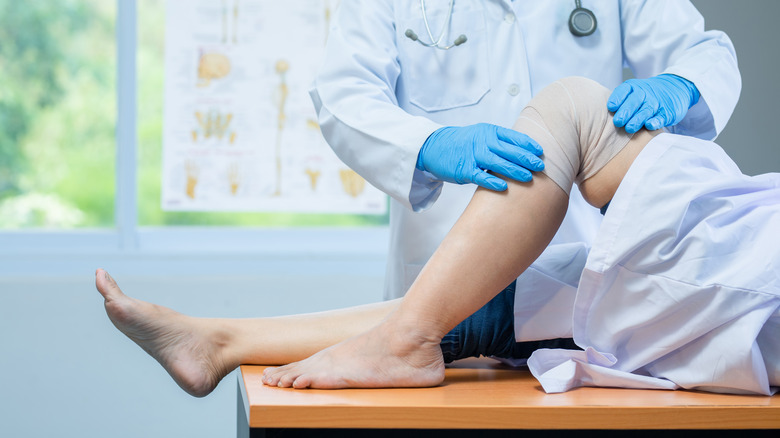What It Really Means When You Tear Your ACL
An anterior cruciate ligament, or ACL, injury is an overstretching or tear to the ligament that tethers your thigh bone to your shinbone (via Mayo Clinic). While anyone can experience an ACL injury, athletes are among the most susceptible due to the strain certain sports may put on particular areas of the body.
An ACL tear is one of the most common knee injuries, according to the American Academy of Orthopaedic Surgeons. Women are more prone to ACL tears than men. Ill-fitting shoes, playing sports on hard surfaces, and improper form during exercise also increases the risk.
Symptoms of an ACL tear include a "popping" sensation in the knee, severe pain, swelling, loss of range of motion, and pain when weight is put on the affected area. If you're experiencing any of these symptoms after an injury, it's important to seek medical care right away. A healthcare provider can assess the severity of the injury and determine proper treatment.
How an ACL tear is treated
The first thing you should do after getting a knee injury, according to the Mayo Clinic, is to utilize the R.I.C.E. model for self-care. This involves resting your knee, applying ice at least every two hours for 20 minutes, wearing a compression wrap, and elevating your knee while lying down.
Treatment for an ACL tear will depend on the individual and severity of the injury. A torn ACL generally requires surgery, but depending on the patient's needs, surgery may not be the best option (via American Academy of Orthopaedic Surgeons). Younger athletes looking to continue playing sports will benefit from surgery, while an older individual who isn't very physically active may opt for nonsurgical options, such as rest, bracing, and physical therapy. Either treatment plan will involve rehabilitation to get to where you were pre-injury. Working with a physical therapist will help you regain strength and the range of motion in your knee. Generally, it can take up to a year or more for an athlete to fully recover.


